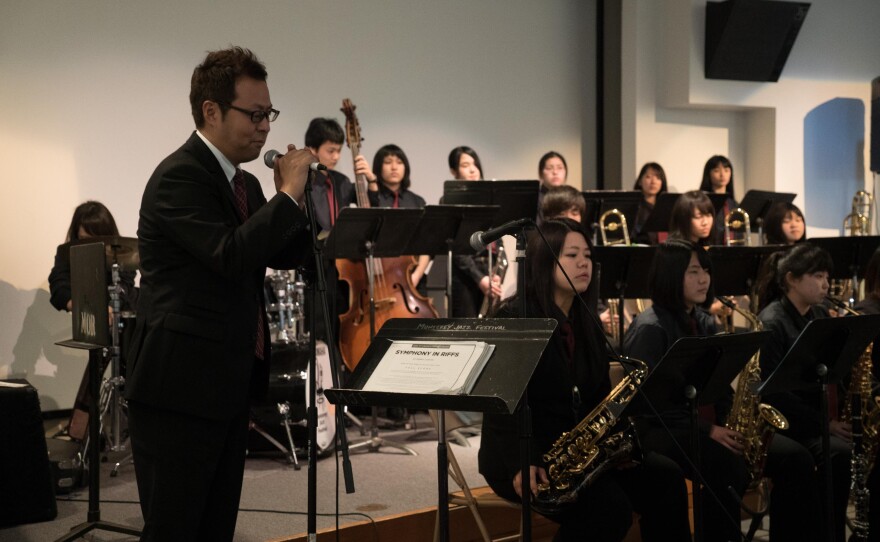The dark auditorium inside the Museum of Monterey is so small that the jazz music roars. It’s almost overpowering, and yet, the people in the audience are tapping their toes and clapping along.
On stage, a swinging band of a dozen Japanese high school students looks sharp dressed in their black uniform with maroon ties. But they sound even better and are literally turning heads.
For nearly half a century the Monterey Jazz Festival has invited top student musicians, from middle school to college, from across the country to participate in its Next Generation Jazz Festival.
“It’s one of the largest education jazz festivals anywhere,” says Paul Contos, the festival’s education director. “We have this year 89 groups coming from all across the U.S.”
But every few years, the musical event becomes a unique cultural exchange between American and Japanese student musicians. It’s a relationship that tells of the special connection between this most American music and the Land of the Rising Sun.
Starting in 1989, Monterey Jazz sent a high school all-star band, now known as the Next Generation Jazz Orchestra, to perform in Japan.
“Those members of the Monterey Jazz Festival board, the founder, Jimmy Lyons, they had initiated some relationships with people in Japan -- musicians and educators,” Contos says. “With music, it doesn’t matter the language barriers or cultural configurations with students. The music just brings everyone together.”
Then Japanese students started coming to Monterey to perform. Like in a study abroad program, they participate in a cultural exchange and get a taste of what it’s like being on the road as musicians.
That band performing on stage is called the Mad Hatters, from Tomisato High School, outside of Tokyo. They’re playing a brassy version of “Sakura, Sakura,” a traditional Japanese song about the beauty of cherry blossoms.
Jazz, like the country’s iconic flower, is everywhere in Japan, says Mad Hatters Band Director Maskai Shinohara -- from the inside of stories to references in literature, evident in the work of author Haruki Murakami.
“In old Japan, jazz was a sensation,” Shinohara says. “Today, it is found in many restaurants and is background music all over. But people who are really into jazz will go see live performances.”
Jazz evolved in the U.S. from a blend of African-American folk music and European-style marches. So how did the genre get to Japan?
“It was in the 1920s, in Yokohama’s harbor, brought over by boat,” Shinohara says.
Those luxury liners crisscrossing the Pacific Ocean carried jazz orchestras. Then the music made its way ashore into Japanese dance halls, and it grew during World War II when American soldiers wanted entertainment from back home. Eventually, Japanese jazz musicians began to emerge.
Mad Hatter Kaho Tomabechi, who plays the saxophone and clarinet, says she loves jazz because of its freedom.
“I can play how I feel within the song structure, and I can express myself,” she says.
Up next for the program, the Next Generation Jazz Orchestra will travel to Japan for two weeks as part of this cultural exchange.





